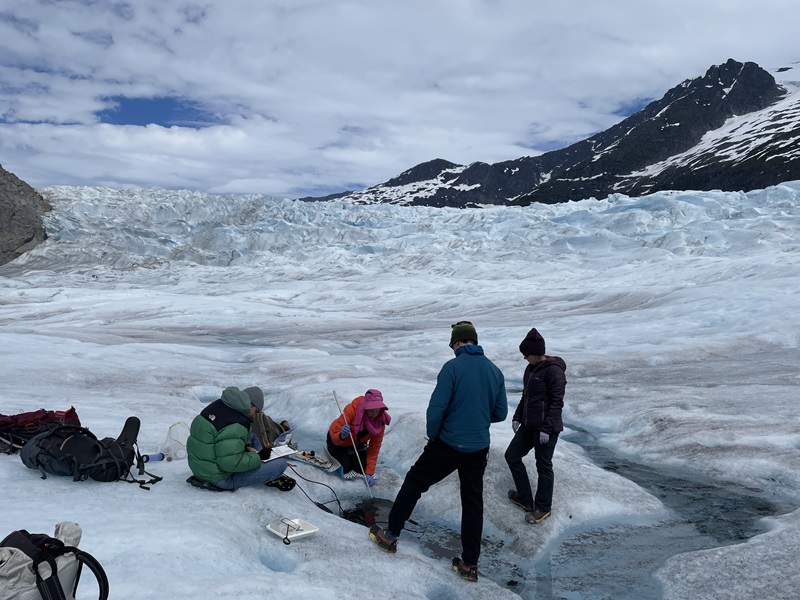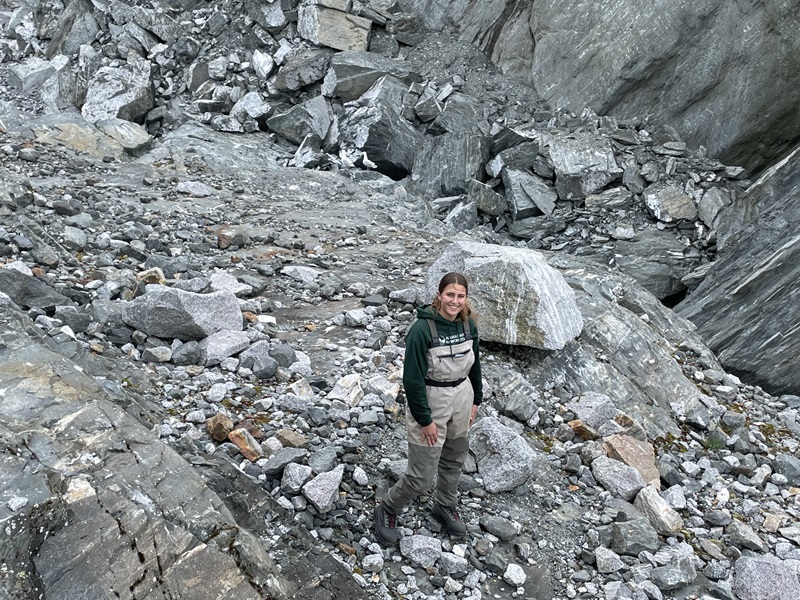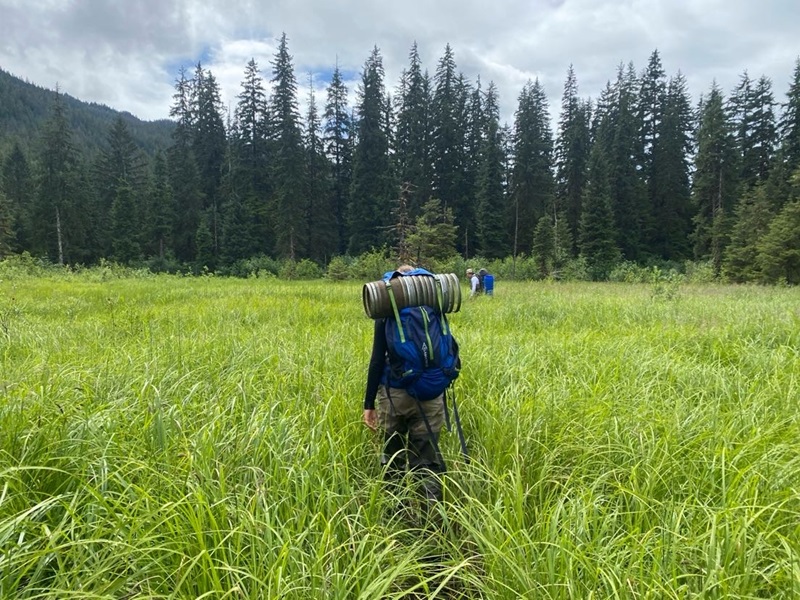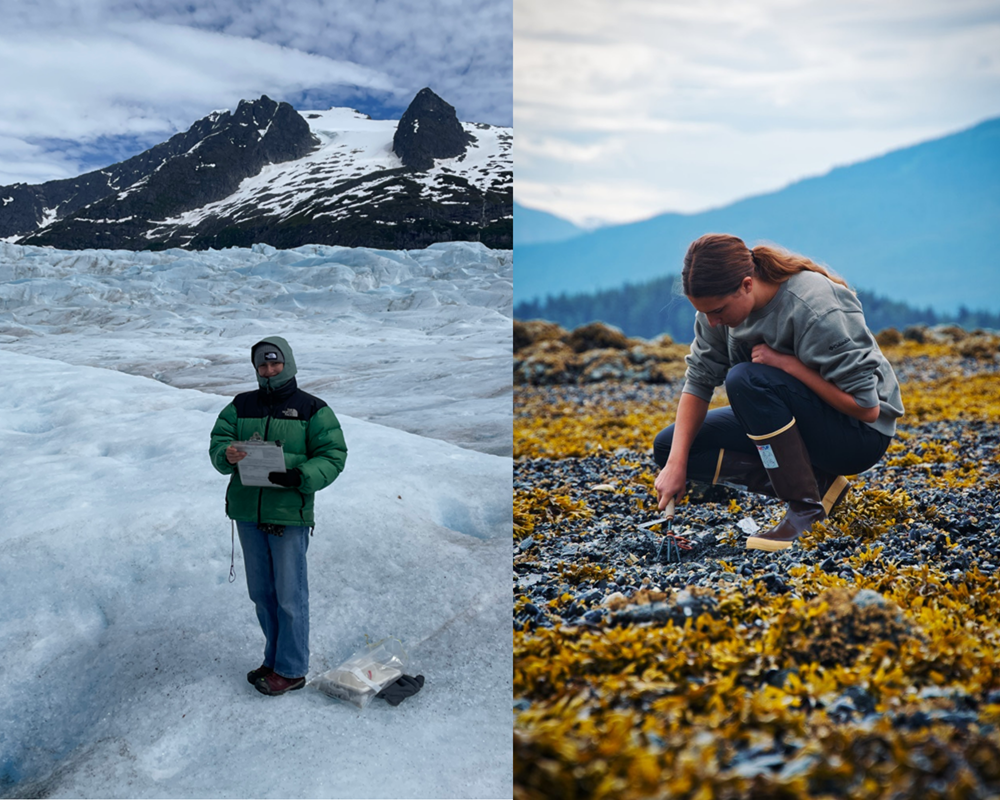Cryoconite Holes, Clam Surveys, and Fish Studies: My Summer Internship Experience

My name is Mia Bramante, and I am an intern at ACRC through Sealaska Heritage Institute. Over the course of my internship, I have gained a variety of skills and experiences in fieldwork, lab processing, and data entry. These experiences will benefit me in my future as I begin Marine Biology and Environmental Science courses at UCLA. The skills I have learned will be applicable in many of my classes and will allow me to enter with a solid background knowledge.
One of the projects I took part in measured water nutrients and stream flow at different stream sites. At each site we collected weekly water samples to be processed, and monthly water flow measurements. I was involved in this project most days of the week, which allowed for lots of time in the field and a deeper understanding of different streams along the way. It also helped build my lab skills and taught me many different methods of processing the water we collected.

Photo: Mia at the Mendenhall Glacier Outflow stream site
Another project I enjoyed working on studied fish diets and movement. I had the opportunity to go out in the field with Lindsey McCulloch and Corban Stearns, hiking to one or more of the three sites: Brown Water, Beaver Pond, and Snow Site. Depending on the day’s goal, we set minnow traps, collected, measured, tagged, diet-sampled, and released fish. On some field days, we also collected water samples, bugs, and scraped moss off of rocks at each site.

Photo: Mia hiking to snow site with minnow traps strapped to her backpack
A couple of projects I spent less time with, but found highly impactful included a day on the Mendenhall Glacier helping Heather with her cryoconite holes project and assisting in pre-field work for a clam biomass survey with John Harley at Point Louisa. With Heather, we traveled hole to hole on the glacier, collecting sediment, water samples, YSI readings, measurements, and GPS locations at each cryoconite hole. With John Harley, we found the upper clam boundary to inform future biomass surveys by digging for clams at each foot of tide drop as the tide receded to see where live clams began to show up. We were looking for 3 types: butter clams, cockle clams, and littleneck clams. As we dug we also found a variety of fascinating worms and other clam species within the intertidal zone. The future biomass surveys will contribute to a project on paralytic shellfish poisoning, trying to find the reason why one side of Point Louisa had clams with higher concentration of toxins than the other.

Photo: (Left) Mia Standing on the Mendenhall Clacier and (Right) Mia digging for clams at Point Louisa
Overall, my experience with the Alaska Coastal Rainforest Center has broadened my understanding of Environmental Science. I have gained experiences that will not only supply me with knowledge of the field but also motivate me to continue pursuing this field into my future.